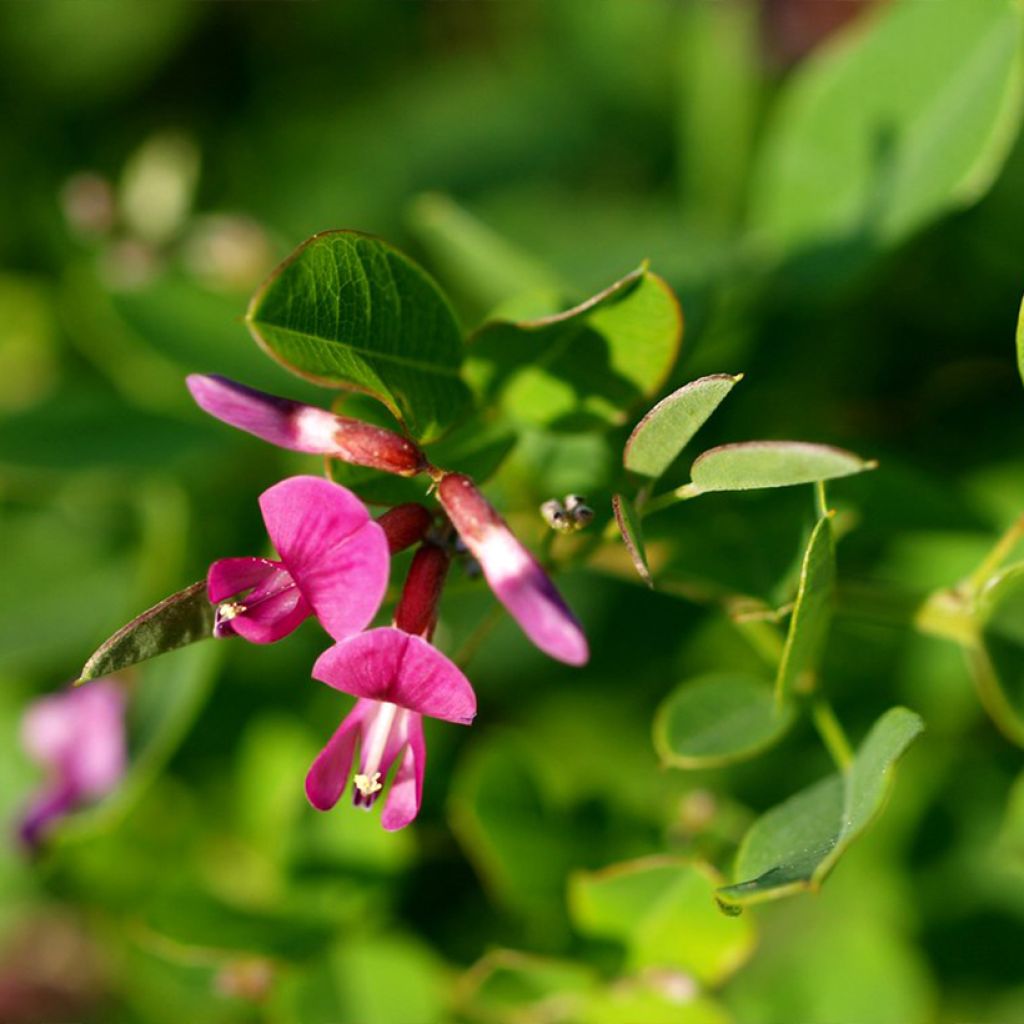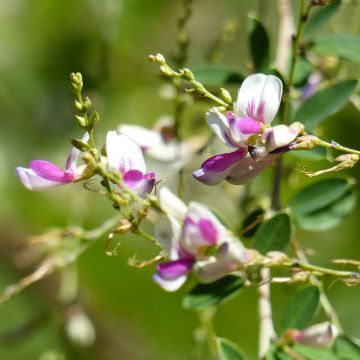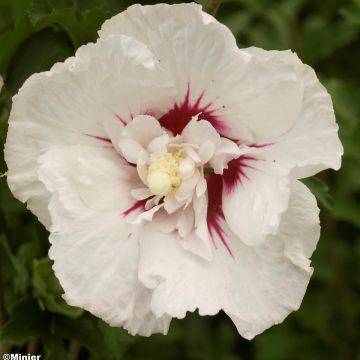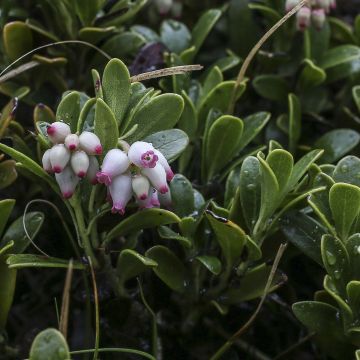

Lespedeza bicolor Yakushima - Trèfle en arbre
Lespedeza bicolor Yakushima
Lespedeza bicolor Yakushima
Bush clover
Received this autumn in good condition. After a year, it is not growing well and some branches are drying up, which is why I wanted to move it to a different spot. While uprooting it, I noticed that the roots have not managed to break through the hard and compact turf clump that surrounds them, despite my attempts to untangle them during planting.
jean-marie, 01/10/2023
This item cannot be shipped to the selected country
Delivery charge from €5.90
More information
Schedule delivery date,
and select date in basket
This plant carries a 24 months recovery warranty
More information
We guarantee the quality of our plants for a full growing cycle, and will replace at our expense any plant that fails to recover under normal climatic and planting conditions.
From €5.90 for pickup delivery and €6.90 for home delivery
Express home delivery from €8.90.
Does this plant fit my garden?
Set up your Plantfit profile →
Description
Lespedeza bicolor 'Yakushima' is a cultivar of bush clover distinguished by its modest size, dense ball-like habit, and beautiful flowering of vibrant and intense pink. This shrub has flexible stems that carry deciduous leaves cut into bluish-green leaflets, making it elegant even outside of the flowering period. Like many plants in the Fabaceae family, formerly legumes, the bush clover is not very demanding in terms of soil. In later summer this pretty selection will animate a flowerbed or border, or a large pot on the terrace.
Lespedeza 'Yakushima' is a dwarf form of bicolour bush clover. The species is mainly native to China and Japan. It is a shrub with a woody base and annual stems in climates that regularly experience frosts. The stems in this bicolor species are more woody and stronger than those of its close relative, Lespedeza thunbergii. Its leaflets are more rounded and its flowers are larger and even more decorative. In cultivation it has few requirements, except for heat and a sunny site. Relatively economical with water, it doesn't however like arid situations, nor excessive alkalinity or overly heavy or clayey soils. Not very sensitive to cold when adult, it does require good protection around the stump when young. The root system of this plant is superficial and equipped with nodes that fix atmospheric nitrogen, indicating good adaptation to degraded soils.
The bush clover 'Yakushima' forms a beautiful clump of upright and branching stems that emerge from the stump in spring. It will reach about 80 cm (32 in) in all directions in a few years. The stems are more or less destroyed by frost in winter, without harming the plant. The foliage, deciduous, resembles that of clover: it is composed of leaves cut into 3 rounded leaflets, of a glaucous green, turning yellow before falling. Flowering takes place between July and September, lasting approximately 4 weeks. It takes the form of thin clusters of papilionaceous flowers, in shades of purple-pink to bright pink. Honey- and nectar-producing, it is much visited by bees, bumblebees and butterflies.
The abundant flowering of Lespedeza is welcome at the end of the summer, alongside the flowers of the autumn asters and shrub sages. its habit is unusual and its leaves contrast with more classic foliage. The bush clover functions as a focal point in the garden - an architectural and beautifully coloured plant. Easy to grow, undemanding, this Yakushima variety will be most effective in a border. Also superb to accompany Perovskias with their beautiful soft blue flowers, or those of Caryoperis, chrysanthemums, or the silvery foliage of the Powis Castle wormwood. Mix its colours with other shades of blue, mauve and pink, or in contrast with e.g. yellow flowers.
Report an error about the product description
Plant habit
Flowering
Foliage
Botanical data
Lespedeza
bicolor
Yakushima
Fabaceae
Bush clover
Cultivar or hybrid
Other Lespedeza
Planting and care
Lespedeza bicolor Yakushima is planted at the beginning of spring or early autumn. It needs a sunny site and well-drained, light and rather rich soil - add a little compost and river sand to your garden soil. It is relatively resistant to cold winds and drought, but watering in a hot climate improves flowering. In order to promote rooting, water abundantly at planting and regularly during the first two summers. Avoid pruning before winter, as with bushy sages, waiting instead until early spring. At that point cut back to 30-40 cm from the ground, when the risk of severe frosts has passed. The vegetation starts rather late - don't be concerned. Young plants will appreciate a thick protective mulch on the stump in winter, to help them cope with severe frosts. The bush clover has few natural enemies but some gastropods appreciate its young shoots, so be sure to protect young plants from them.
Planting period
Intended location
Care
-
, onOrder confirmed
Reply from on Promesse de fleurs
Late-flowering shrubs
Haven't found what you were looking for?
Hardiness is the lowest winter temperature a plant can endure without suffering serious damage or even dying. However, hardiness is affected by location (a sheltered area, such as a patio), protection (winter cover) and soil type (hardiness is improved by well-drained soil).

Photo Sharing Terms & Conditions
In order to encourage gardeners to interact and share their experiences, Promesse de fleurs offers various media enabling content to be uploaded onto its Site - in particular via the ‘Photo sharing’ module.
The User agrees to refrain from:
- Posting any content that is illegal, prejudicial, insulting, racist, inciteful to hatred, revisionist, contrary to public decency, that infringes on privacy or on the privacy rights of third parties, in particular the publicity rights of persons and goods, intellectual property rights, or the right to privacy.
- Submitting content on behalf of a third party;
- Impersonate the identity of a third party and/or publish any personal information about a third party;
In general, the User undertakes to refrain from any unethical behaviour.
All Content (in particular text, comments, files, images, photos, videos, creative works, etc.), which may be subject to property or intellectual property rights, image or other private rights, shall remain the property of the User, subject to the limited rights granted by the terms of the licence granted by Promesse de fleurs as stated below. Users are at liberty to publish or not to publish such Content on the Site, notably via the ‘Photo Sharing’ facility, and accept that this Content shall be made public and freely accessible, notably on the Internet.
Users further acknowledge, undertake to have ,and guarantee that they hold all necessary rights and permissions to publish such material on the Site, in particular with regard to the legislation in force pertaining to any privacy, property, intellectual property, image, or contractual rights, or rights of any other nature. By publishing such Content on the Site, Users acknowledge accepting full liability as publishers of the Content within the meaning of the law, and grant Promesse de fleurs, free of charge, an inclusive, worldwide licence for the said Content for the entire duration of its publication, including all reproduction, representation, up/downloading, displaying, performing, transmission, and storage rights.
Users also grant permission for their name to be linked to the Content and accept that this link may not always be made available.
By engaging in posting material, Users consent to their Content becoming automatically accessible on the Internet, in particular on other sites and/or blogs and/or web pages of the Promesse de fleurs site, including in particular social pages and the Promesse de fleurs catalogue.
Users may secure the removal of entrusted content free of charge by issuing a simple request via our contact form.
The flowering period indicated on our website applies to countries and regions located in USDA zone 8 (France, the United Kingdom, Ireland, the Netherlands, etc.)
It will vary according to where you live:
- In zones 9 to 10 (Italy, Spain, Greece, etc.), flowering will occur about 2 to 4 weeks earlier.
- In zones 6 to 7 (Germany, Poland, Slovenia, and lower mountainous regions), flowering will be delayed by 2 to 3 weeks.
- In zone 5 (Central Europe, Scandinavia), blooming will be delayed by 3 to 5 weeks.
In temperate climates, pruning of spring-flowering shrubs (forsythia, spireas, etc.) should be done just after flowering.
Pruning of summer-flowering shrubs (Indian Lilac, Perovskia, etc.) can be done in winter or spring.
In cold regions as well as with frost-sensitive plants, avoid pruning too early when severe frosts may still occur.
The planting period indicated on our website applies to countries and regions located in USDA zone 8 (France, United Kingdom, Ireland, Netherlands).
It will vary according to where you live:
- In Mediterranean zones (Marseille, Madrid, Milan, etc.), autumn and winter are the best planting periods.
- In continental zones (Strasbourg, Munich, Vienna, etc.), delay planting by 2 to 3 weeks in spring and bring it forward by 2 to 4 weeks in autumn.
- In mountainous regions (the Alps, Pyrenees, Carpathians, etc.), it is best to plant in late spring (May-June) or late summer (August-September).
The harvesting period indicated on our website applies to countries and regions in USDA zone 8 (France, England, Ireland, the Netherlands).
In colder areas (Scandinavia, Poland, Austria...) fruit and vegetable harvests are likely to be delayed by 3-4 weeks.
In warmer areas (Italy, Spain, Greece, etc.), harvesting will probably take place earlier, depending on weather conditions.
The sowing periods indicated on our website apply to countries and regions within USDA Zone 8 (France, UK, Ireland, Netherlands).
In colder areas (Scandinavia, Poland, Austria...), delay any outdoor sowing by 3-4 weeks, or sow under glass.
In warmer climes (Italy, Spain, Greece, etc.), bring outdoor sowing forward by a few weeks.















































